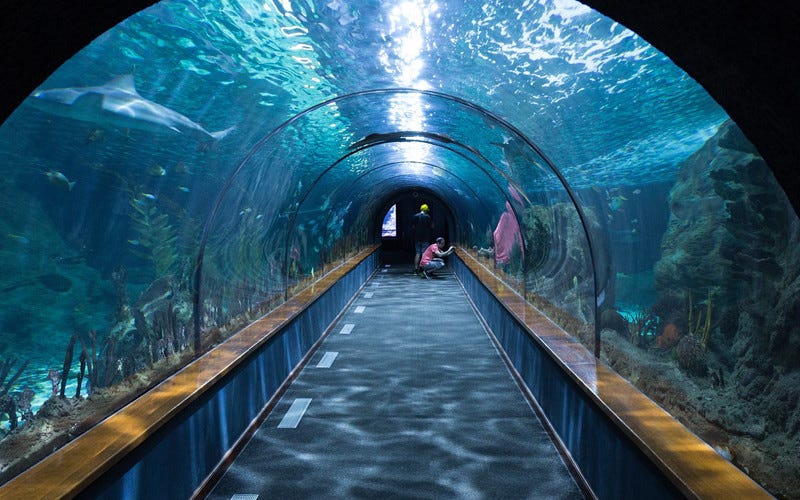By Catalina Cano

The largest aquarium in the United States decided that it isn’t big enough. Last year, Georgia Aquarium unveiled its plans of expansion which would feature a shark exhibit that will open to the public in the late fall of 2020. The aquarium envisions this new projects as an opportunity to educate people about “one of the most misunderstood species in the ocean,” and the importance of conservation in order to protect this marine species.
“We’ve always done thing big,” said Joseph Handy, the president and COO of Georgia Aquarium. “Twelve years after our opening we’re still holding true to that.”
The saltwater enclosure will include shark species such as hammerheads, sand tiger sharks, sandbar sharks, among others which will be appreciated by the public through floor-to-ceiling acrylic windows, giving the feeling of being up-close to the sharks. The expansion will add a seventh gallery to the aquarium, making it one of the most expensive in its history with a striking $100 million investment. For the first time since its opening, the Georgia Aquarium will be seeking funding from key partners and philanthropic investors. Besides the funding, the Georgia General Assembly approved tax breaks of $4.5 million directed towards the expansion.
Though Georgia Aquarium views its new project as an educational opportunity to bring awareness to the public about the dangers of overfishing and habitat destruction, there are many people who oppose the construction.
In 2016, In Defense of Animals (IDA), an animal welfare organization released a list that placed Georgia Aquarium in fourth place of the worst tank for dolphins and whales, called the “dying pool” by many. The Aquarium witnessed the deaths of three Beluga whales between 2012 and 2015.
“The aquarium is in complete disregard of the animals’ needs for space and socializing,” said Sarah — who wished to remain anonymous for professional reasons — an environmental activist and past member of the Greenpeace Atlanta chapter. “The animals are often cramped and isolated, away from their natural environment and away from the possibility of normal interaction.”

Activists believe that Georgia Aquarium’s educational programs can have detrimental and mortal consequences for the shark species. The aquarium’s plan to include touch tanks would not only inflict immense levels of stress on the animals but would also introduce unfamiliar bacteria to them.
Though animal captivity is not an ideal condition for any species, it is often viewed as a more favorable option for the conservation of threatened species. But many conservationists have said they believe that if education and conservation are in the best interest of the aquarium, then they would allocate their money into wildlife reservations and organizations that protect marine life in the wild. With the current global social movements which are demanding political leaders to prioritize the conservation and protection of the environment and wildlife, as well as the approaching 2021 United Nations Environment Assembly which will be held during the last week of February, many are joining the debate on the ethics behind animal captivity. Regardless of the support or opposition, Georgia Aquarium is moving forward with its plans, with a year to go before the exhibit is inaugurated.




















